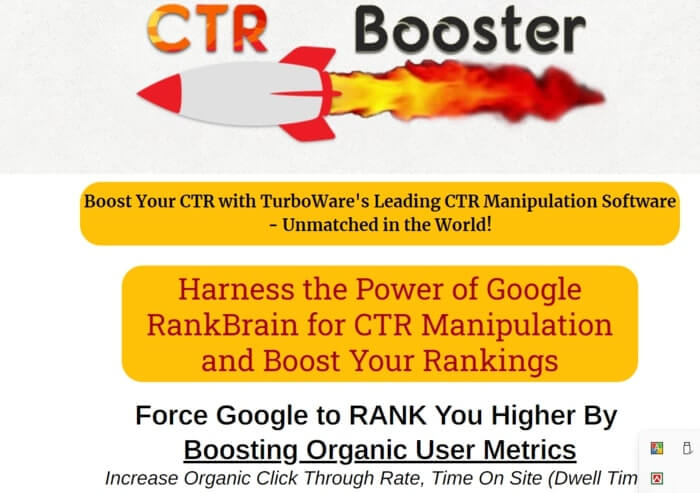Maximizing Organic Click-Through Rates With CTR Manipulation
The optimization of natural click-through rates (CTR) is a nuanced undertaking that pivots on recognizing both customer psychology and efficient material discussion. By leveraging tactical control techniques, such as powerfully crafted headlines and visually engaging components, online marketers can considerably improve individual interaction. Nevertheless, the landscape is swarming with misunderstandings and oversimplifications concerning what really drives CTR. As we discover the complexities of these strategies, it ends up being necessary to recognize the underlying principles that can cause sustained success in capturing audience interest. What truly distinguishes the reliable from the ineffective in this crucial facet of digital marketing?
Understanding Click-Through Rates
Recognizing click-through prices (CTR) is vital for evaluating the effectiveness of on-line advertising and marketing techniques. CTR gauges the percentage of users who click on a specific web link or ad compared to the complete variety of individuals who watch it. A higher CTR suggests that the web content is engaging and appropriate to the target market, while a lower CTR may signify a requirement for optimization.
To compute CTR, split the number of clicks by the variety of impressions and multiply by 100. If an advertisement obtains 300 clicks out of 10,000 impressions, the CTR would certainly be 3%. This metric is vital for assessing different aspects of digital advertising, including search engine optimization (SEARCH ENGINE OPTIMIZATION), e-mail campaigns, and social media advertising and marketing.
Additionally, evaluating CTR aids online marketers identify which approaches generate the very best results and which require refinement. By concentrating on enhancing CTR, organizations can boost their content's exposure and effectiveness, bring about enhanced website traffic and potential conversions. Comprehending the subtleties of CTR is fundamental for any marketing professional intending to maximize their online visibility and make the most of roi (ROI)

The Psychology of Individual Behavior
Individual habits is considerably influenced by psychological elements that dictate just how individuals interact with on-line material. Comprehending these variables is crucial for optimizing click-through rates (CTR) in organic search results page. Cognitive predispositions, such as the anchoring impact, play a vital duty in shaping users' understandings. When users encounter information, their initial perceptions can greatly influence their subsequent judgments about significance and credibility.
Emotional feedbacks likewise substantially effect user behavior. Material that resonates mentally can trigger a feeling of necessity or interest, prompting individuals to click. Furthermore, social evidence-- such as customer evaluations or rankings-- can boost trust fund and motivate interaction, as individuals typically want to the actions of others to notify their own choices.
In addition, the principle of deficiency can drive clicks - GMB CTR Manipulation. Limited-time offers or special content develop a concern of missing out on out (FOMO), engaging users to act promptly. Comprehending these psychological chauffeurs makes it possible for marketing professionals to create more compelling material that reverberates with their target market
Efficient CTR Manipulation Strategies
Leveraging mental understandings can considerably boost click-through rates (CTR) with targeted manipulation methods. One of the most reliable techniques is using engaging headings that evoke inquisitiveness or urgency. Phrasing titles as inquiries or incorporating numbers can attract even more focus, triggering users to click.
Another technique click for info includes maximizing meta descriptions to create a sense of importance and immediacy. By plainly outlining the services or benefits provided in the content, you can engage possible readers and encourage them to click. Furthermore, using power words-- such as "special," "shown," or "cost-free"-- can enhance the appeal of your material.
Visual elements additionally play a crucial role. Integrating distinctive photos or thumbnails can draw users in and boost CTR. A/B testing various visuals can assist recognize which images resonate finest with your target market.
Last but not least, ensuring that your material promises deliverable worth results in higher CTR. When individuals regard that clicking will certainly offer them with meaningful insights or services, they are extra most likely to involve. By utilizing these strategies attentively, online marketers can efficiently adjust CTR to their benefit while preserving moral requirements.
Common Myths Concerning CTR
A number of misunderstandings surround click-through rates (CTR) that can lead marketing professionals to make misguided choices. One common myth is that a greater CTR constantly translates to better efficiency. While a high CTR recommends that more users are clicking, it does not ensure conversions or sales. Inevitably, the effectiveness of traffic depends on the quality of the landing page and the relevance of the content.
One more typical idea is that CTR is a separated metric. Actually, CTR must be evaluated along with other performance signs, such as bounce rate and conversion rate, to gain an all natural sight of campaign success.
Additionally, some marketers assume that optimizing for CTR alone is adequate. Nevertheless, focusing solely on CTR can cause clickbait tactics that might draw in clicks but fail to engage individuals meaningfully. This technique can damage brand name track record and outcome in lower retention prices
Finally, there is an idea that CTR approaches are widely efficient. The truth is that ideal CTR tactics can vary significantly across markets and target audiences, necessitating customized techniques for different market sectors. Understanding these myths is crucial for creating effective CTR methods that straighten with overarching advertising and marketing objectives.
Determining CTR Success
Although high click-through rates (CTR) can show successful interaction with content, determining their true success needs an extensive evaluation of a number of factors. It is crucial to comprehend the context in which the official site CTR is attained. A high CTR on a misleading title might not translate to purposeful engagement or conversions, inevitably mirroring poorly on the brand name's reputation.
2nd, assessing the resource of web traffic is essential. Organic website traffic from internet search engine can signify a durable material technique, while clicks from irrelevant sources may show an absence of targeting. Additionally, determining the succeeding user behavior is essential; assessing metrics such as bounce price, time invested in page, and conversion rates can provide much deeper understandings right into the quality of the involvement launched click this link by the CTR.

Final Thought

The optimization of natural click-through rates (CTR) is a nuanced venture that hinges on understanding both user psychology and reliable content presentation. CTR measures the percent of customers that click on a specific web link or advertisement compared to the total number of users who view it. A greater CTR shows that the content is engaging and appropriate to the target audience, while a reduced CTR may signal a demand for optimization.
Concentrating solely on CTR can lead to clickbait tactics that might attract clicks however fall short to engage customers meaningfully. Additionally, measuring the subsequent customer actions is important; evaluating metrics such as bounce rate, time invested on web page, and conversion rates can offer much deeper insights into the high quality of the interaction initiated by the CTR.